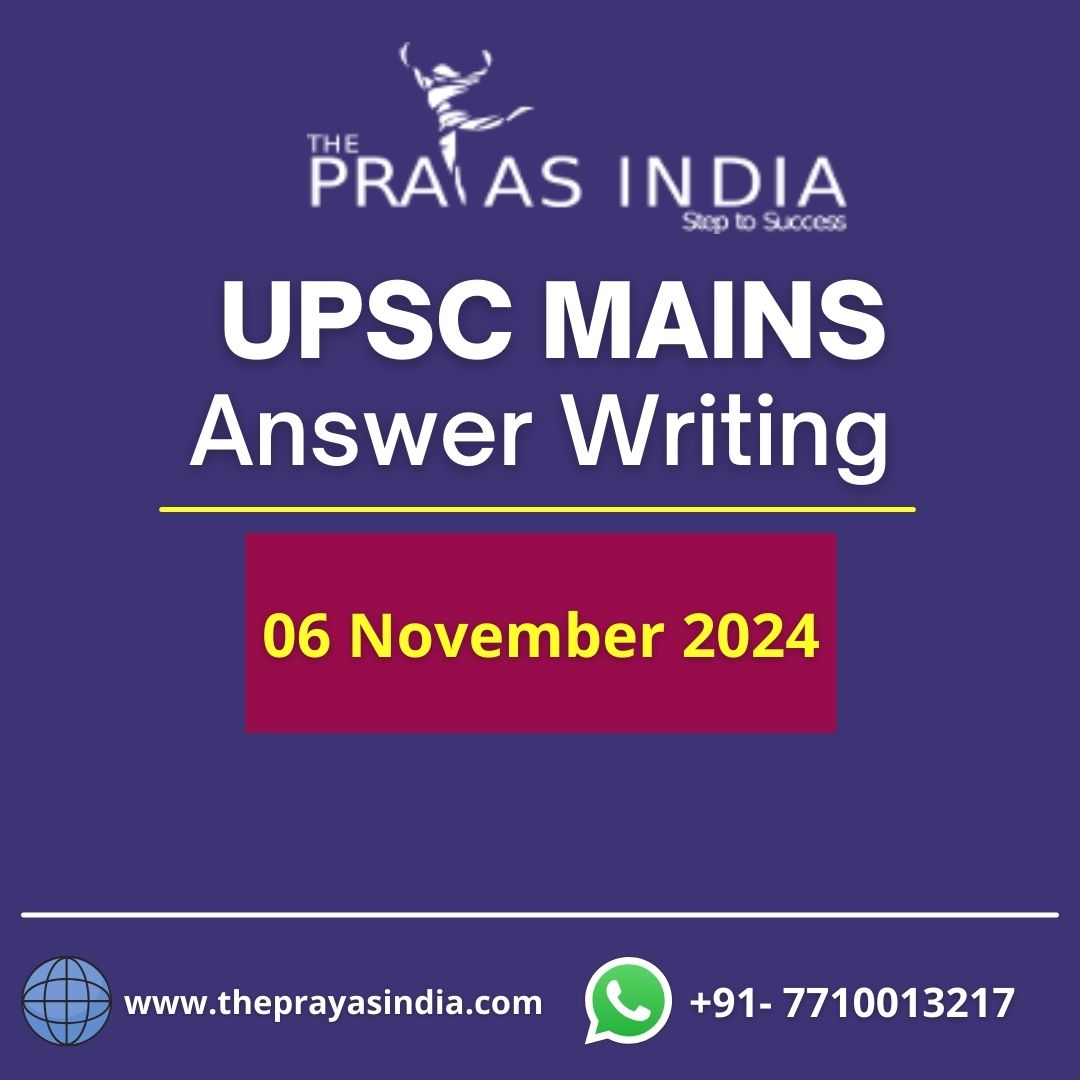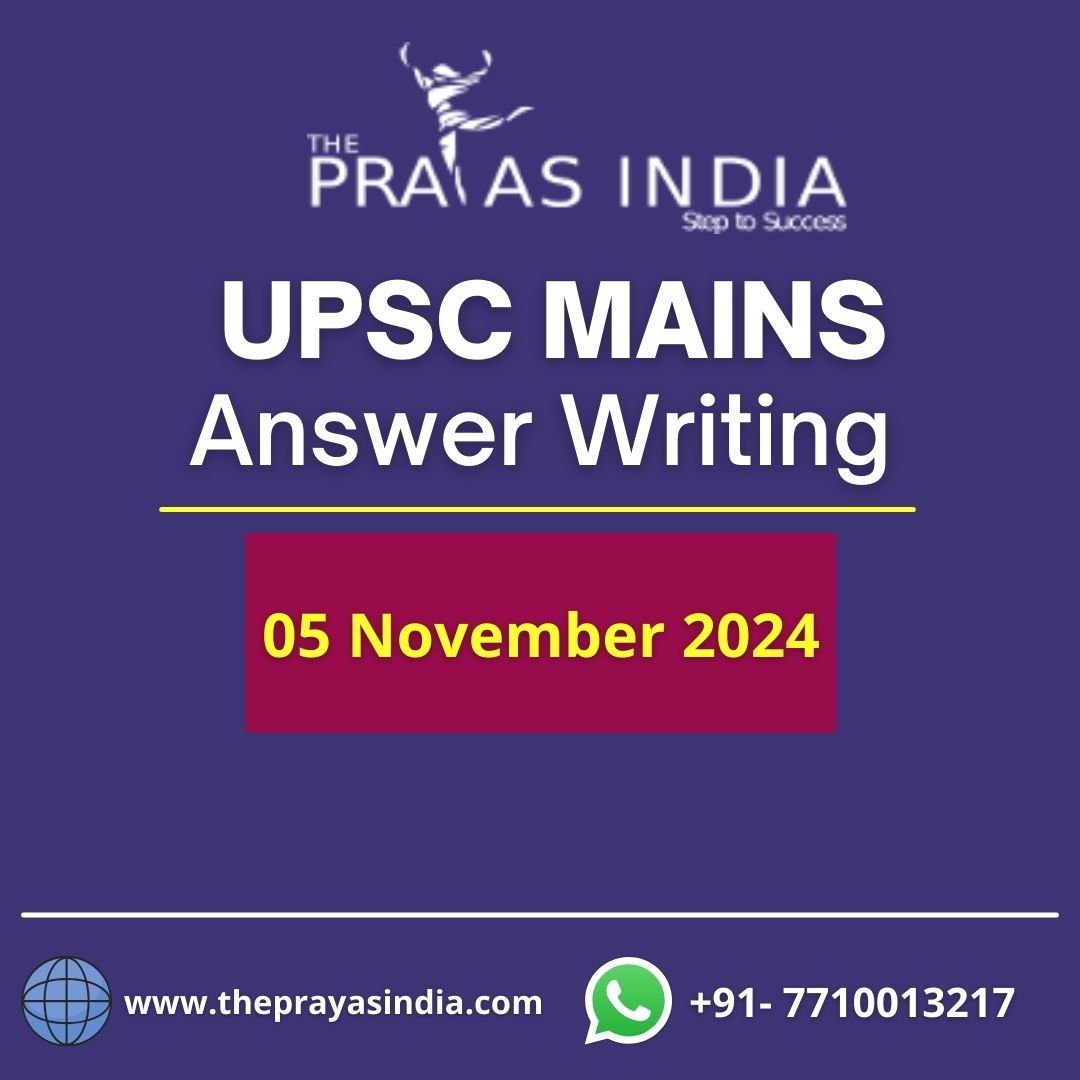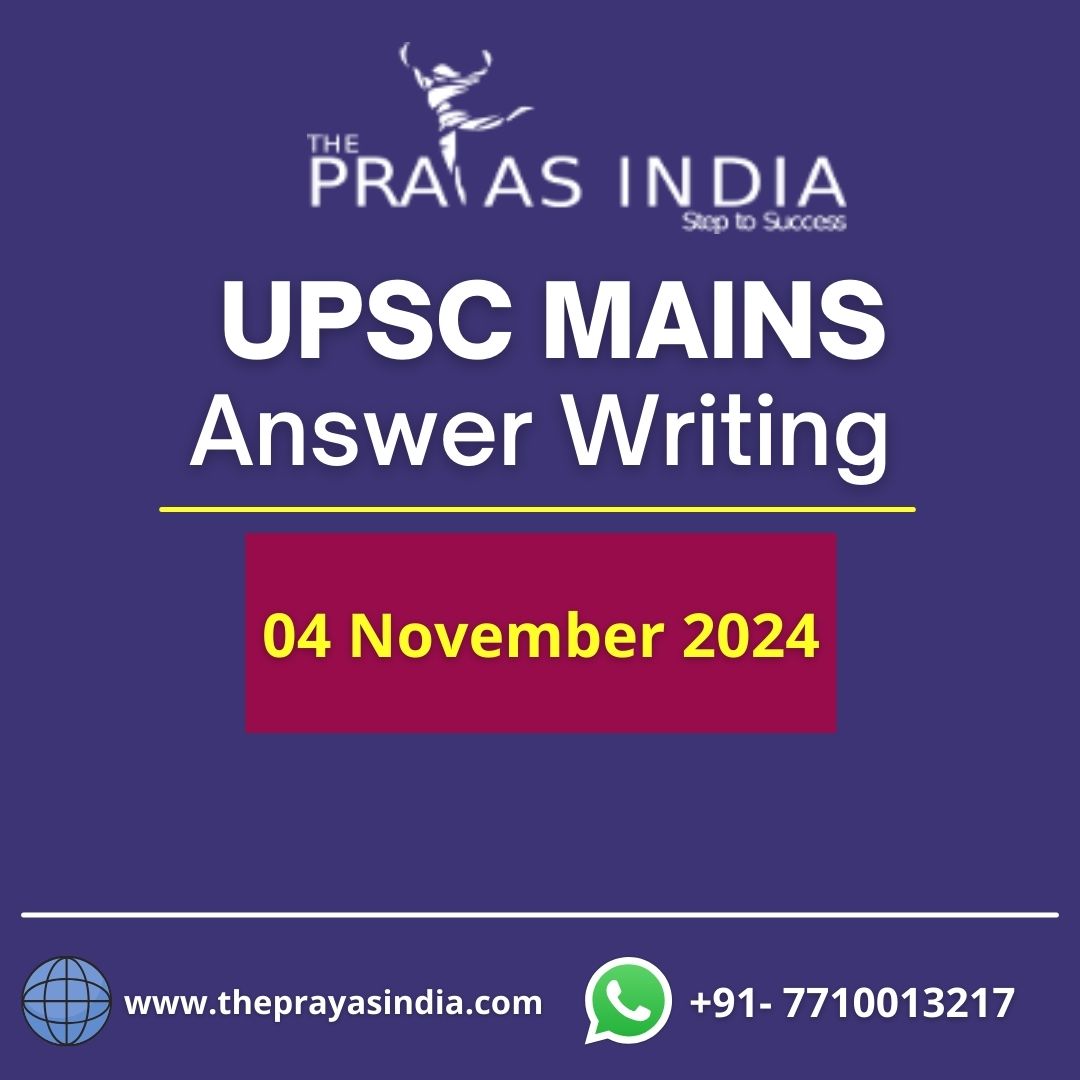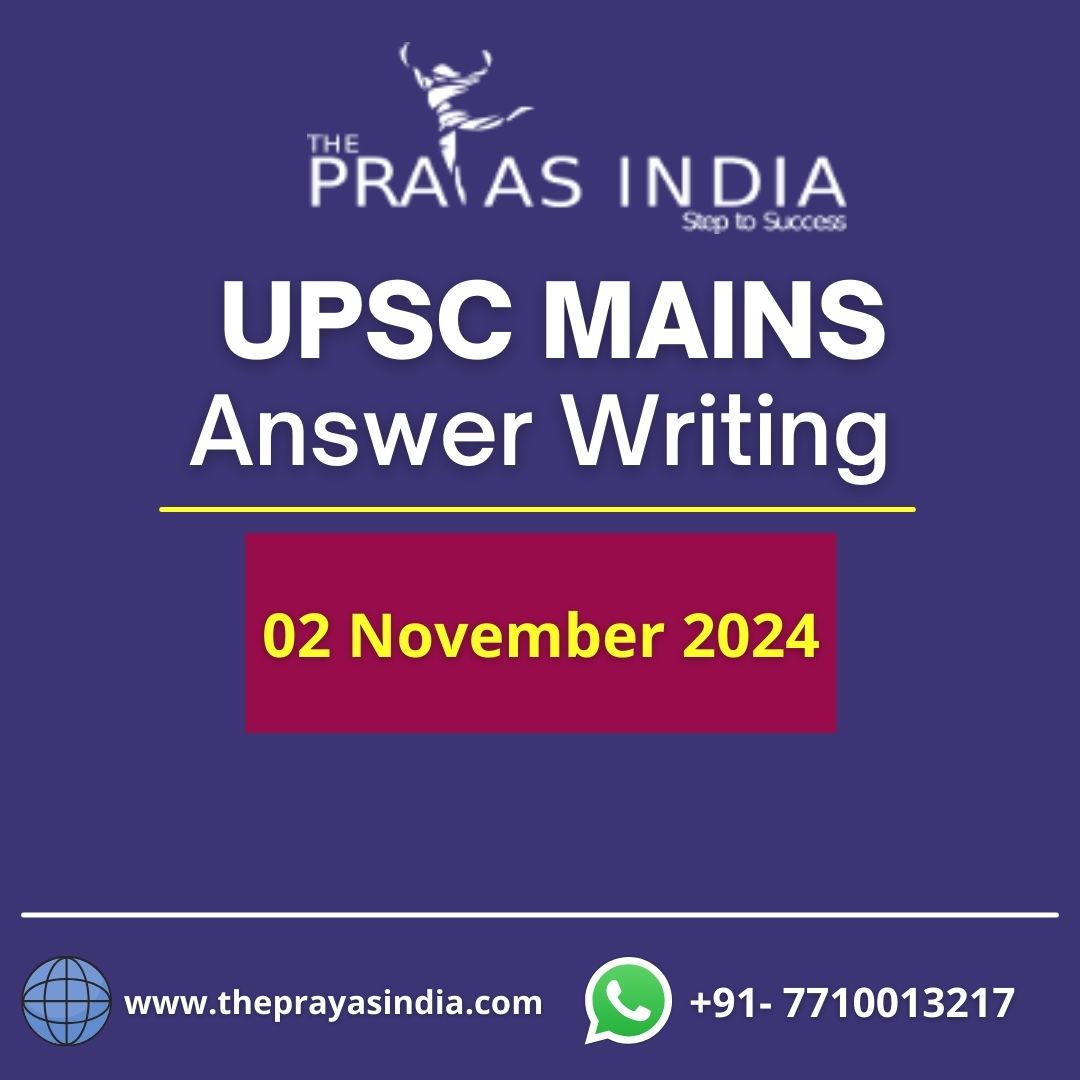MAINS DAILY QUESTIONS & MODEL ANSWERS
Q1. What are the issues that India faces in terms of internal security? Describe the roles played by the Investigative Agencies and Central Intelligence in thwarting these threats.
GS III – Internal Security
Introduction:
- The protection of its population from threats both internal and foreign is the primary duty of a sovereign state. India has faced a number of internal security issues since gaining its independence, such as militancy, insurgency, and rebellions that are instigated from outside.
Challenges to India’s Internal Security:
- Separatist Movements: Since the founding of our country, separatist sentiments have been and continue to be a source of conflict for law enforcement. Take the separatist movements in Kashmir and Nagaland, for instance.
- Communalism: Hostile exchanges and physical altercations have frequently resulted from the disputes between the two main religious groups. Separatist impulses are heightened by this. Hatred between groups makes our population easy pickings for terrorist recruitment.
- Illegal Migration: The nation’s resources have been put under strain as a result of the several related issues that illegal migration has brought about throughout time, including rising unemployment and demographic shifts.
- Left-Wing Extremism: Characterised by Marxism or Maoism as its political ideology, it is observed in the central and eastern regions of India. Its rise can be attributed to both land alienation and socioeconomic inequality.
- In India, numerous intelligence and investigative agencies are operating under diverse mandates to carry out specific tasks.
- The National Investigation body (NIA) is India’s top counterterrorism law enforcement body, looking into crimes affecting the country’s security, integrity, and sovereignty.
- The Narcotics Control Bureau (NCB) is the highest authority for coordinating efforts amongst different drug and narcotics law enforcement authorities. It aims to stop drug trafficking throughout India.
- The agency that handles intelligence regarding the smuggling of contraband and looks into cases connected to it is called the Directorate of Revenue Intelligence (DRI). It also aims to stop money laundering and the spread of illicit funds.
- The top intelligence agency in the nation, the Intelligence Bureau (IB), is in charge of gathering intelligence domestically and carrying out counterterrorism activities. It addresses issues related to internal security and domestic intelligence.
- The Intelligence Bureau’s international intelligence operations were taken over by the Research and Analysis Wing (R&AW). These days, it gathers foreign intelligence, fights terrorism, and gives policymakers in India advice.
- The Central Bureau of Investigation (CBI) is the top investigative police agency, established on the Santhanam Committee’s recommendation. In addition to conducting investigations, it serves as Interpol’s entry point.
- Agency cooperation and coordination are essential to addressing India’s internal security issues. Strong defences against security threats require investments in technology, global collaboration, and community involvement.
Q2. Identify the main financing sources for terrorism in India and the steps being taken to cut them off. Discuss the purpose and goals of the No Money for Terror (NMFT) Conference, which was just conducted in New Delhi in November 2022, in light of this.
GS III – Internal Security
Introduction:
- India has experienced numerous forms of insurgency and terrorism since gaining its independence in 1947. India has grown through the years, learning from its mistakes and adopting various strategies to combat funding for terrorism and associated activities.
Main funding sources for terrorism:
- State Sponsorship: It is common knowledge that using terror to advance diplomatic goals is done. States enable terrorists and encourage criminality so they can utilise them when necessary to further their goals.
- The act of directly printing and distributing counterfeit money in the market is known as counterfeiting. On the other hand, this is a tactic that bordering states employ to undermine the Indian economy.
- Organised Crime: Criminal groups typically operate in networks and have ties to larger terrorist organisations. Resources are exchanged in both directions between these two.
- Extortion: This continues to be the main way that terrorism is funded in India, particularly in the Northeast.
- The Hawala System is a way that criminal networks transmit money illegally, usually across international borders.
Measures taken to reduce sources:
- The National Investigation Agency (NIA) is India’s top agency for fighting terrorism throughout all states without the need for extra state authorization.
- Unlawful Activities Prevention Act: The goal of this anti-terrorism statute is to label a person as a “terrorist.”
- The National Intelligence Grid (NATGRID) is a centralised data repository for information pertaining to crime and terrorism.
- SAMADHAN Doctrine: Specifically designed to address Left-Wing Extremism issues, it also attempts to limit the financial resources available to terrorist groups.
- The third Ministerial Conference on Counter-Terrorism Financing, organised by No Money for Terror (NMFT), took place in New Delhi, India, recently.
It aimed to:
- Work together with nations all over the world to reduce funding for terrorism and extremism.
- to establish a national secretariat on the subject that will function as a cooperative and collaborative organisation rather than an investigative one.
- to look into fresh and developing threats and terrorist propagation techniques.
- Given its two adversarial neighbours, India is not permitted to act complacently when it comes to internal security. India keeps up the fight against terrorism in a number of ways.




